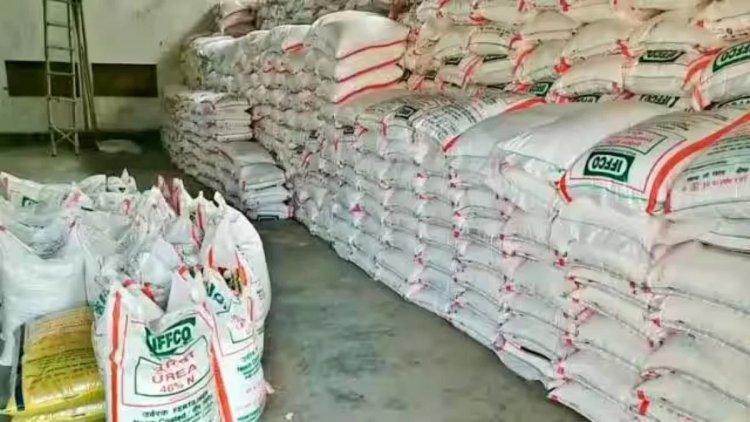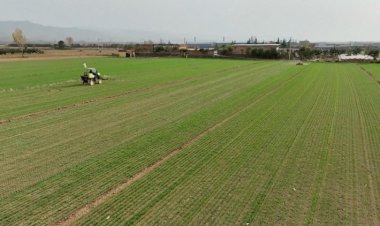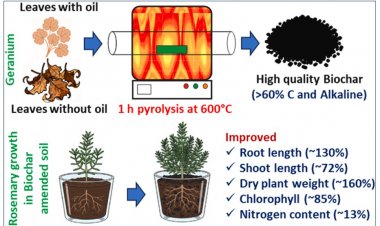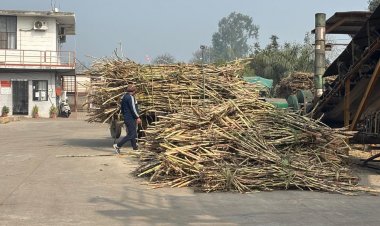Govt to curb diversion of subsidised urea
The government has prepared a comprehensive action plan to crackdown on diversion of highly-subsidised urea to plywood and other industries. The Union chemicals and fertilisers ministry will coordinate with other central ministries as well as states to curb the diversions and plans are also afoot to launch joint operations to prevent the diversion of agriculture-grade urea.

The government has prepared a comprehensive action plan to crackdown on diversion of highly-subsidised urea to plywood and other industries. The Union chemicals and fertilisers ministry will coordinate with other central ministries as well as states to curb the diversions and plans are also afoot to launch joint operations to prevent the diversion of agriculture-grade urea. There will be zero tolerance towards diversion of agriculture grade urea to industrial use and violators could even face a jail term, according to official sources.
Earlier this week, Union Chemicals and Fertilisers Minister Mansukh Mandaviya asked states and Union Territories to curb diversion of agriculture-grade urea to industries. Neem-coated urea is provided by the central government to farmers at a highly subsidised rate of Rs 266 per bag (of 45 kilograms), which is much cheaper than technical-grade urea meant for industrial use. In this backdrop, there are instances of diversion of agriculture-grade urea to industries that make resin/glue, plywood, crockery, moulding powder, cattle feed and industrial mining explosives.
The Department of Fertilisers has prepared the "comprehensive action plan" to stop diversion of urea meant for farming to prevent leakages of subsidy and ensure that farmers' interest do not get hampered. The sources said there have been instances of the neem coating of agriculture-grade urea being removed through some chemical process and then used for industrial purposes.
As per the action plan, the department will coordinate with different ministries, including finance and commerce, as well as the state governments to crackdown on industries using agriculture-grade urea instead of technical-grade urea. It will also take help from the Directorate General of Goods and Services Tax Intelligence (DGGI). A joint operation by the central government and states will also be launched soon.
Further, the department will monitor the total supply, both domestic production and imports, of technical-grade urea as well as keep a tab on the total goods produced by industries that need urea as a raw material. These measures will help the government in assessing the supply and use of technical-grade urea and prevent possible diversion of agriculture-grade urea.
According to the sources, the department will take strict legal actions under the Essential Commodities Act, Fertiliser Control Order and Prevention of Black-marketing Act against the industrial units found to be engaging in diversion of neem-coated urea. Besides, the central government is mulling asking industries to submit all the relevant data related to urea consumption in their factories and their total output of final product with the department, they said.
In July last year, the department had launched a nationwide crackdown to curb diversion of agriculture-grade urea per year for industrial uses. A special team of dedicated officers - 'Fertiliser Flying Squad' - was constituted for surprise inspections of units involved in diversion, black marketing, hoarding and supply of sub-standard quality fertilisers.
Last year, a senior government official had said that about 10 lakh tonnes of urea were getting diverted, mostly to industries and some quantity to neighbouring countries, resulting in subsidy leakage of around Rs 6,000 crore. There is a requirement of around 13-14 lakh tonnes of technical-grade urea for industrial usage, of which only 1.5 lakh tonnes are produced in the country, the official had said.
In 2022-23 fiscal, India produced 284.95 lakh tonnes of urea and imported 75 lakh tonnes of urea to meet domestic demand. In the case of urea, the government fixes the maximum retail price and reimburses the difference between the production cost and retail price to urea manufacturers.



 Join the RuralVoice whatsapp group
Join the RuralVoice whatsapp group







































